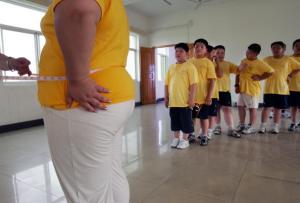
Toddlers who watch too much television will also widen their waistlines, according to a University of Montreal study published this week.
The study of 1,314 children from the Quebec Longitudinal Study of Child Development Parents were asked, “How much time per day does your child spend watching TV?” at 29 months and then again at 53 months. A two-part follow-up test of muscular fitness was conducted on these children when they reached the second grade. First, the children were asked to do a standing long jump test. Second, the children’s waist circumference was measured.
“The mission of this research is not to guilt parents,” reported lead study author Dr. Caroline Fitzpatrick on Monday. “Childhood is a critical period for the development of habits and we were looking for a more direct physical measure of the impact of television on young children.”
The average 2 to 4-year-old in the study sat through 8.82 hours of TV each week. An increase of 4.1 millimeters around the waste was found by age 10.
The habits of the children were ingrained throughout the participants of the school. The study, published in the International Journal of Behavioral Nutrition and Physical Activity, found nearly 15 percent of the youngsters were watching more than 18 hours of TV a week.
Because researchers relied on mothers’ own reporting of their children’s TV watching habits, Fitzgerald figured their results might be conservative, given the possibility mothers would shave off some TV time.
“Many shows are marketed to parents as educational and beneficial but there is no statistical evidence that this is true,” Fitzpatrick said. “TV watching should be a treat, like chocolate.”
By the numbers: One hour of TV at 29 months led to a 3.61 millimeter decrease in standing long jump results in the second grade. Every hour of TV from 29 months to 53 months led to a 5 percent increase of being in the bottom percentile of the standing long jump test.
One hour of TV from 29 months to 53 months led to a .42 millimeter increase in waste measurement and 18-plus hours per week of TV led to a 7.6 millimeter increase in waste measurement in the second grade.
The study factored in such variables as the family’s income and education as well as the mother’s body mass index.
A 2010 study by Fitzpatrick at the University of Montreal found that each extra hour of TV by toddlers led to a future decrease in how involved they were in school, how good they were at math and how much junk food they ate. Fitzpatrick said she hopes the data will help shape future public health campaigns about the impact of TV watching on children’s health.
Study: Toddlers Who Watch Too Much TV Have Wider Waistlines « CBS DC









